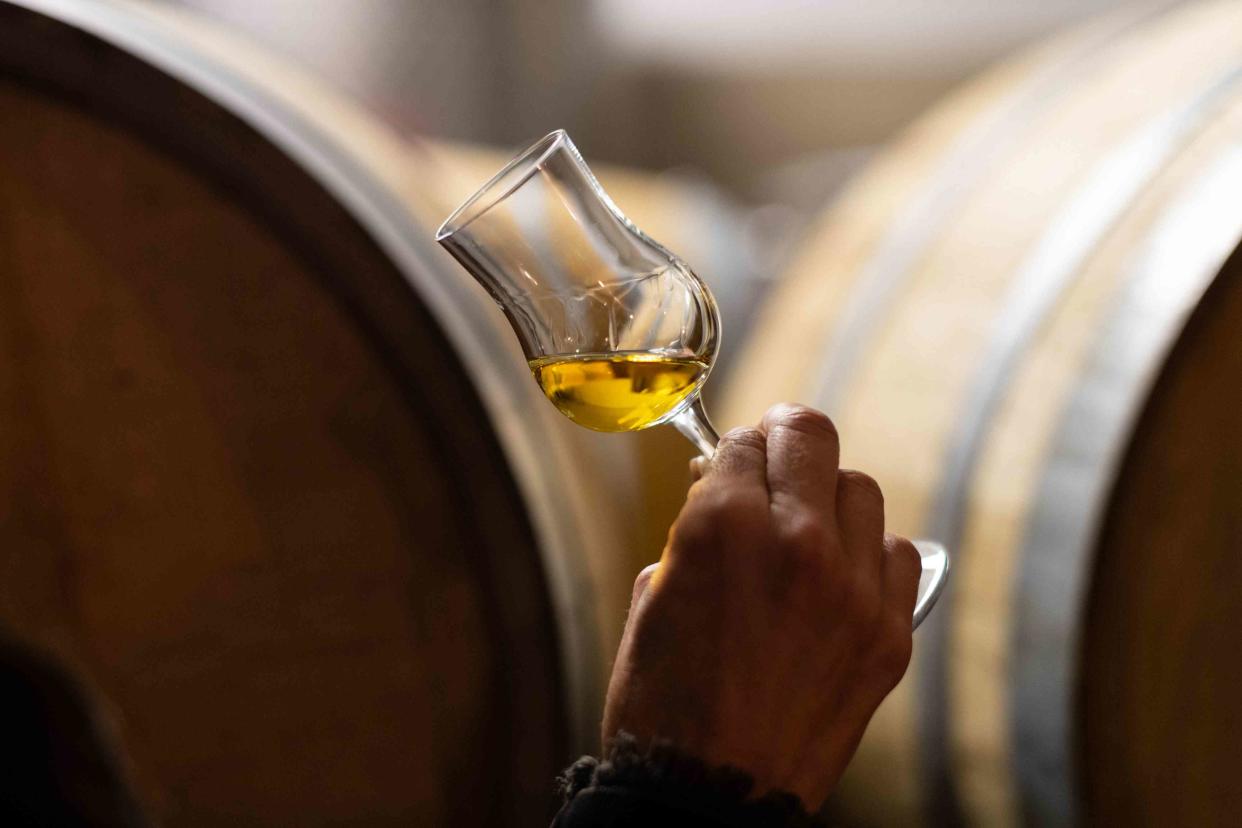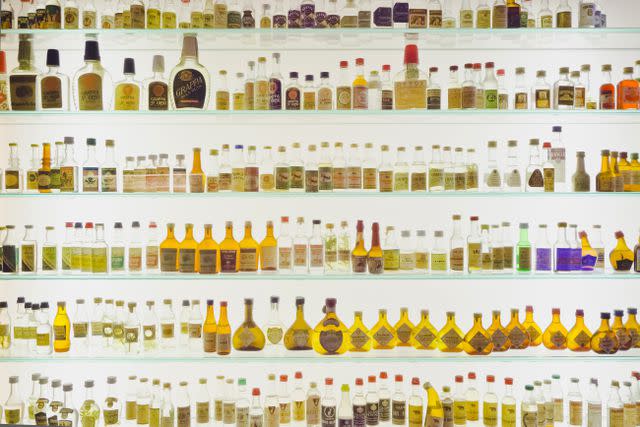A Guide to Grappa, the Italian Digestif You Should Order More Often
Whether you're sipping a grappa neat or incorporating it into cocktails, learn why this brandy belongs on your bar cart.

piola666 / Getty Images
One of the signature features of Italy’s famous la dolce vita includes lingering over the table after the plates are cleared, and grappa, the country’s signature grape spirit, has long been a part of the experience.
Aaron Wood-Snyderman, wine and beverage director at Four Seasons Resort Maui, which includes Italian-inspired Ferraro’s Restaurant & Bar, says that after a large meal, his Italian grandfather would sip on grappa-spiked coffee, so now, he associates the drink with socializing the way his grandpa did.
Not sure where to start when it comes to serving and drinking grappa? We’ve got you covered.
What is grappa?
Grappa is a spirited way to upcycle the leftovers of winemaking.
It’s technically a brandy (a spirit distilled from fruit) that’s made from grape pomace, or the skins, seeds, stems, and pulp that remain after grapes have been pressed for wine. Aromatic grapes, such as Chardonnay, Gewürztraminer, Malvasia, and Moscato, are popular choices for grappa.
The pomace is fermented with natural yeasts for a few days to a few weeks, then distilled to yield a digestif.
“Grappa was originally made as a way to savor and capture every bit of fermentable sugar from the winemaking process and not waste anything,” says Tiffany Tobey, sommelier at KNIFE Italian inside the Ritz-Carlton Dallas. Even though it’s made from grapes, grappa is much more like a spirit than like a wine. “The alcohol in grappa jumps right out of the glass. It’s generally between 35% and 60% ABV.”
Just as Champagne with a capital “C” and any cheese labeled “Parmigiano Reggiano” must be produced in a particular place and adhere to certain specifications, grappa must be made in Italy, the Italian part of Switzerland, or the Republic of San Marino, as per a protected Geographic Indication within the European Union.

David Madison / Getty Images
Even still, Wood-Snyderman says that many beverage producers use the word grappa for brandy distilled in the United States and South America, as long as it is made from grape pomace the same way it would be made in Italy.
For this reason, Grant Reynolds, a New York City-based sommelier, founder of the online wine retailer Parcelle, and author of The Wine List relates grappa bianca to blanco tequila; clear, unaged, and fresher than flavor than its oak-aged añejo cousins.
Types of grappa
Bianca: Young, unaged grappa that has a delicate aroma and a clean taste. Most of the grappa available in the U.S. is unaged grappa.
Affinata in Legno: Grappa that has been fined in wood for a short time, which lends a hint of depth and warmth.
Vecchia (a.k.a. invecchiata): Grappa that’s been matured for 12 to 18 months. It’s light golden in hue, and “there are more vanilla and spice notes” says Wayne Gravesande, assistant general manager at Ketchy Shuby in New York City.
Reserva (a.k.a. stravecchia): Grappa that’s been aged in oak for at least 18 months, which transforms it into a golden amber elixir that has more intense spice and vanilla qualities.
What does grappa taste like?
“The less wood age on the grappa the more you pick up on the fresh floral notes still present from the grape skins,” says Thomas Radecki, food and beverage manager at Mel’s in New York City. “If a single varietal was used it is often indicative of the grape in these younger versions.”
“As you add wood aging, the grappa takes on more secondary notes that impart wood spice and often soften the harsher sharpness of the younger versions,” says Radecki.
Young grappa is often the most rustic, showing wine-esque notes of red fruit and rosehips through its powerful, spirit-forward base, while aged grappa will start to show honeyed notes like vanilla and caramel.
You can sip grappa neat or with a single ice cube, but it also works as an accent ingredient in an array of drinks.
How to use grappa
In coffee (just a splash will do)
As an alternative to pisco in a sour cocktail
Instead of tequila in your next Margarita
As a replacement for gin in a Negroni, Martini, or Last Word
Paired with limoncello, vanilla liqueur, and muddled fresh mint
In a riff on affogato: blend 1 ½ ounces grappa with 1 ounce espresso, ½ ounce coffee liqueur, ½ ounce crème de cacao, and 1 scoop of vanilla ice cream or gelato
The best grappa to try
After all of this grappa talk, you might be feeling inspired to add a bottle or two to your home bar. We asked our panel of experts to spill about the brands they trust.
Nardini: Intense yet balanced, this brand has been making grappa since 1779. Wood-Snyderman believes that it’s one of the most well made grappas that is widely-available in the U.S.
Nonino: This is the world’s first single-varietal grappa, a move that’s said to have transformed the reputation from a humble drink of peasants to a splurge-worthy sip.
Cocchi: Tasty to enjoy on its own or mixed into cocktails, this is Gravesande’s top selection for your home bar.
Berta Distillerie: Seek out these barrel-aged grappas for “a round, smoky, pleasantly tannic drinking experience not dissimilar from scotch or an añejo tequila,” Radecki recommends. They’re often aged for 10 years or more.
Romano Levi Distillery: Tough to find but worth the hunt, Reynolds and Radecki rave about this family-owned brand that’s known for using traditional methods and equipment, and for crafting “very small batches to ensure the highest quality,” says Radecki. Plus, the distiller hand-draws the labels featuring whimsical characters and scenes.
For more Food & Wine news, make sure to sign up for our newsletter!
Read the original article on Food & Wine.








